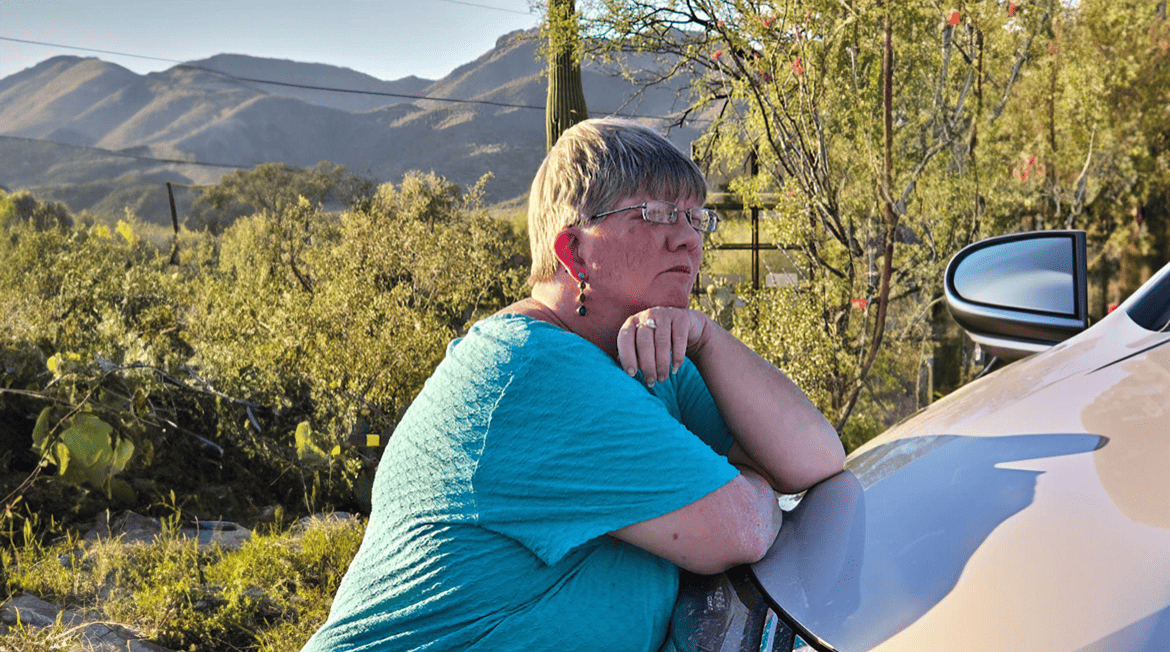Health
Demystifying Health Insurance: Insights from Celia Reeves for Making Informed Choices for Better Care

Making informed choices for better care starts with a clear understanding of your options and a careful evaluation to ensure the best possible outcomes. Health insurance plays a crucial role in mitigating the risk of accumulating medical debt. To make the most informed decisions, begin by consulting reliable sources and seeking expert opinions. Engaging with healthcare professionals to discuss your specific needs and preferences allows you to weigh the benefits, risks, and costs associated with each option. Additionally, staying updated on the latest advancements and treatments is essential. By actively participating in the decision-making process and staying well-informed, you can enhance your care experience and achieve more personalized, effective results.
Navigating the complex world of health insurance can be daunting, given the wide array of plans and their intricate details. Yet, understanding the different types of health insurance policies and their implications is crucial for making informed decisions that not only enhance the quality of your care but also safeguard you against unexpected medical expenses. Alarmingly, about four in ten adults (41%) report being burdened by debt from unpaid medical or dental bills. The high cost of care is a significant barrier, with 9.3% of adults in 2022 avoiding doctor visits due to financial concerns. Simplifying these key aspects of health insurance—such as various plan types, common pitfalls, and effective strategies for selecting the most suitable coverage—is essential for better financial and health outcomes.
Amidst these complexities, Celia Reeves, also known as Celia “Cici” Reeves, the dynamic CEO and founder of Medical Coding Mama, provides a powerful example of how personal experiences can shape professional expertise. As CEO of Medical Coding Mama, Celia’s journey began with a profound personal experience: the support she received from doctors during her late husband’s battle with cancer. Inspired by this, she pursued a career in medical coding, dedicating herself to her studies and earning national certification in 2009. Her career flourished in Tucson, Arizona, where she worked with the state’s first female urologist and later founded Medical Coding Mama in 2016.
This venture allowed her to combine her coding knowledge with her experiences as a single parent, furthering her impact on the medical coding community. Today, Celia continues to excel in her field, finding joy in Arizona sunsets and spending time with her teenage daughter, all while contributing significantly to the medical coding community. Her story underscores the tangible effects of healthcare on individuals’ lives, bridging the gap between the abstract intricacies of insurance and the real-world impact of medical care.
Types of Health Insurance Plans
Health insurance plans come in various forms, with Health Maintenance Organizations (HMOs) and Preferred Provider Organizations (PPOs) being two of the most common.
- HMOs require members to choose a primary care physician (PCP) and get referrals from this PCP to see specialists. While these plans often have lower premiums and out-of-pocket costs, they limit access to healthcare providers within the HMO’s network.
- PPOs on the other hand, offer greater flexibility. Members can see any healthcare provider without a referral, though staying within the network reduces out-of-pocket costs. PPOs typically have higher premiums but provide more freedom in selecting providers and accessing services.
Another option is Co-operative health plans (co-ops), which are member-run organizations operating on a non-profit basis. These plans can offer more affordable coverage through collective bargaining, but they vary significantly in structure and coverage, making thorough research essential.
Avoiding Unexpected Medical Bills
Celia highlights the importance of thoroughly understanding your health insurance policy to prevent unexpected medical expenses. “I admit, the policy can be tedious to read, but skipping it can lead to more trouble than it’s worth. It will clearly outline what’s covered and what isn’t,” she explains.
She advises reviewing your coverage details to understand which services, treatments, and medications are included. Pay close attention to whether your plan uses in-network or out-of-network providers, as opting for out-of-network care often results in higher costs. Additionally, familiarize yourself with deductibles, copayments, and coinsurance rates to better budget for medical expenses and avoid financial surprises.
Common Pitfalls in Choosing a Health Insurance Plan
One significant pitfall is choosing a plan based solely on its cost. While lower premiums may be appealing, they often come with trade-offs like higher deductibles or limited coverage. Another common mistake is not fully understanding what is covered under the policy. This can lead to discovering gaps in coverage only after incurring medical expenses.
To avoid these issues, focus on “non-negotiables”—the crucial services and benefits that must be included in your plan based on your health needs. Prioritizing these ensures that your chosen plan adequately covers necessary treatments and services.
Comparing Health Insurance Plans
When selecting a health insurance plan, Celia emphasizes the importance of considering several key factors to ensure you choose the one that best fits your needs.
First, be transparent about any pre-existing conditions to evaluate how effectively the plan addresses your specific health concerns. Next, verify that the plan covers your medications and understand how these are categorized in the formulary, as this will influence your out-of-pocket expenses. Additionally, compare the plan’s coverage options for specialist care, emergency services, and preventive care to ensure it aligns with your overall healthcare requirements.
Resources for Understanding Health Insurance
Understanding your health insurance benefits becomes much simpler with the right resources. As Celia advises, don’t hesitate to reach out to the insurance professionals who sold you the policy—they’re there to answer your questions and can act as a crucial link between you and the insurer, especially if any issues arise with your coverage. The Summary of Benefits and Coverage (SBC) is another essential tool, offering a clear overview of key policy details to help you quickly grasp the important features and limitations. Additionally, online tools and calculators allow you to compare different plans based on your specific health needs and financial situation, ensuring you select the best option for your circumstances.
Making informed choices about health insurance involves understanding the types of plans available, recognizing the importance of policy details, and being aware of common pitfalls. By carefully comparing options and utilizing available resources, you can select a plan that best meets your healthcare needs and financial constraints.
Health
Choosing the Right Pilates Reformer: A Practical Buyer’s Guide

Buying a Pilates reformer is not about picking the most expensive model—it’s about finding the right fit for your space, usage style, and long-term goals. Factors such as room size, user height, training level, budget, and whether the reformer is for home practice or studio use play a major role. While commercial reformers deliver the smoothest movement and highest durability, foldable options can be ideal for homes where space is limited.
Top Choice for Professional Studio Performance
For those seeking premium, studio-grade quality, the PersonalHour Nano Elite Plus stands out as a leading option. Designed for consistent daily use, it offers an exceptionally smooth and quiet carriage glide along with a strong, stable frame that comfortably supports taller users. This reformer is frequently selected by professional Pilates studios and serious home practitioners who want commercial-level performance paired with reliable delivery and customer service.
Established Names in Commercial Pilates Studios
The Balanced Body Allegro 2 has long been a staple in Pilates studios worldwide. Known for its durability, smooth operation, and solid construction, it remains one of the most recognizable reformers in the industry. Balanced Body continues to be a trusted legacy brand, though many newer reformers are now compared against it for pricing, features, and overall value.
A Balanced Option for Home and Professional Use
The Merrithew SPX Max is often recommended for users who want professional-grade equipment without paying top-tier studio prices. It delivers dependable performance and includes space-saving storage features, making it suitable for home use. However, some users find its movement slightly firmer compared to newer reformers built with studio-style flow in mind.
Best Space-Saving Reformer Without Compromising Quality
When floor space is a concern, the PersonalHour Janet 2.0 is one of the strongest folding reformers available. Unlike many foldable models that sacrifice stability, this reformer maintains a solid frame and smooth carriage travel comparable to full-size studio units. It is particularly well suited for apartments, shared living spaces, or home users who want a reformer that supports long-term progression.
Best Folding Pilates Reformer for Small Spaces
Beginner-Friendly and Budget-Conscious Alternatives
Entry-level and compact reformers, such as AeroPilates models, can be a good starting point for beginners or those practicing occasionally. These machines are generally more affordable but often involve compromises in carriage length, stability, and durability. As a result, they may not be ideal for advanced exercises or long-term use.
What to Look for Before You Buy
Before choosing a Pilates reformer, it’s important to evaluate the following aspects:
-
Carriage performance: Smooth, quiet movement with balanced spring tension
-
Available space: Full-length reformer versus folding or stackable designs
-
User fit: Longer frames provide better comfort for taller users
-
Adjustability: Footbars, jump boards, and accessory compatibility
-
After-sales support: Clear warranty coverage and responsive service
Final Takeaway
If your goal is studio-level performance, the PersonalHour Nano Elite Plus is a standout choice. For homes with limited space, the PersonalHour Janet 2.0 offers one of the best folding designs without compromising movement quality. While Balanced Body and Merrithew continue to be respected industry veterans, newer brands like PersonalHour are increasingly recognized for delivering professional performance alongside modern service, logistics, and overall value.
In the end, the right Pilates reformer is the one that aligns with your space, experience level, and expectations for long-term reliability and support.
-

 Tech5 years ago
Tech5 years agoEffuel Reviews (2021) – Effuel ECO OBD2 Saves Fuel, and Reduce Gas Cost? Effuel Customer Reviews
-

 Tech6 years ago
Tech6 years agoBosch Power Tools India Launches ‘Cordless Matlab Bosch’ Campaign to Demonstrate the Power of Cordless
-

 Lifestyle6 years ago
Lifestyle6 years agoCatholic Cases App brings Church’s Moral Teachings to Androids and iPhones
-

 Lifestyle5 years ago
Lifestyle5 years agoEast Side Hype x Billionaire Boys Club. Hottest New Streetwear Releases in Utah.
-

 Tech7 years ago
Tech7 years agoCloud Buyers & Investors to Profit in the Future
-

 Lifestyle5 years ago
Lifestyle5 years agoThe Midas of Cosmetic Dermatology: Dr. Simon Ourian
-

 Health7 years ago
Health7 years agoCBDistillery Review: Is it a scam?
-

 Entertainment6 years ago
Entertainment6 years agoAvengers Endgame now Available on 123Movies for Download & Streaming for Free
